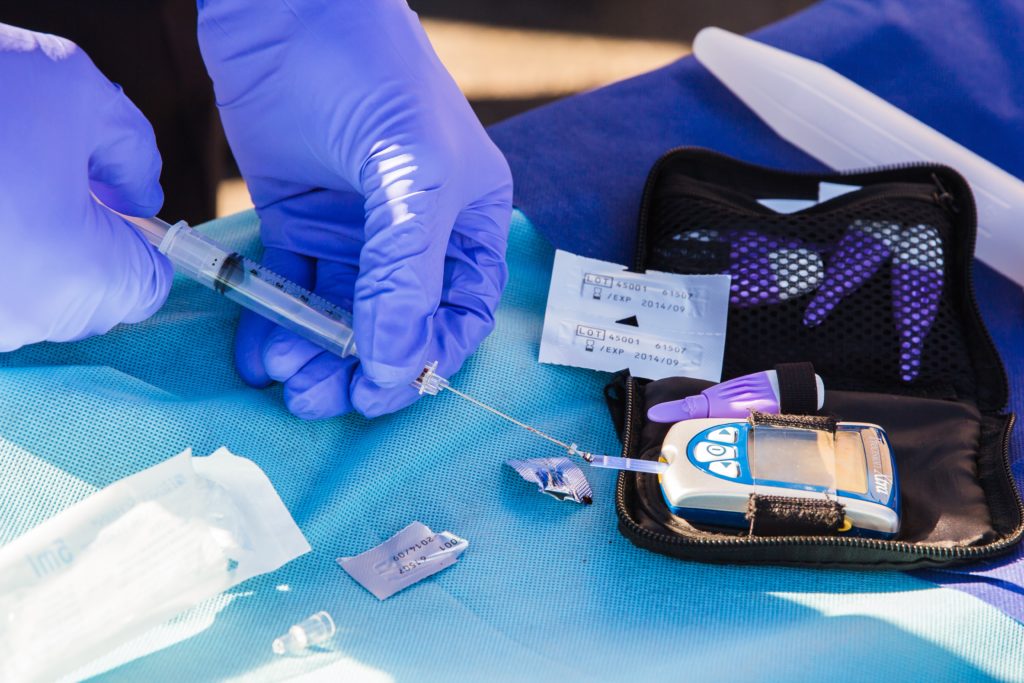Since 1980, the prevalence of diabetes in the worldwide adult population has increased from 4.7% to 8.5%. Sufferers of painful diabetic neuropathy, or PDN, make up 10 to 20% of people with diabetes.
A review of recent literature described opioid analgesics such as methadone, morphine, tramadol and tapentadol as recommended second- or third-line agents for managing moderate to severe neuropathic pain. As second-line agents, these opioid analgesics — pain relievers — are chosen after initial diabetes therapy fails to adequately control blood glucose levels and mitigate PDN.
What Is Diabetic Neuropathy?
Diabetic neuropathy is a type of nerve damage that can occur with diabetes. You may hear your health care provider mention the four types of diabetes-related neuropathy — autonomic, peripheral, focal and proximal.
All forms of diabetic neuropathy may be painful and seem to be related to blood sugar levels remaining elevated for long periods.
The existing evidence on the practical use of opioids for those suffering from pain associated with PDN is strong, meaning there are several advantages of using methadone to treat diabetic neuropathy.
What Is Methadone?
Methadone, a drug categorized as an opioid, is traditionally used to manage chronic pain and relieve drug cravings or withdrawals. The drug is sometimes used as part of a treatment program for an addiction to narcotic painkillers or heroin.
Methadone blocks the effects of opioids and can contribute to the recovery process.
Diabetes and Methadone: Taking Methadone With Diabetes
Studies have found that methadone provides consistently superior pain relief to treat persistent neuropathic pain or diabetic neuropathy compared to other available opioids. The initial therapy for diabetic peripheral neuropathy often includes anticonvulsants, tricyclic antidepressants or combinations of those drugs. However, medical professionals turn to methadone when a patient is in moderate to severe pain that other methods can’t manage sufficiently.
According to a review of the use of methadone for the treatment of diabetic neuropathy published by the American Diabetes Association, the drug has proved minimally problematic with appropriate dosage. Based on the available information, numerous physicians have deemed methadone effective for managing neuropathic pain.
Sugar and Methadone
Some clinical observations suggest that methadone may occasionally be responsible for hypoglycemia, or a condition in which blood sugar levels are lower than usual. However, these situations seem to be uncommon and are associated with higher quantities of methadone.
At Health Care Resource Centers, our programs throughout the New England area are state-licensed, federally certified and have received three-year accreditations by the Commission on Accreditation of Rehabilitation Facilities, or CARF.
Our clinicians use methadone, a drug with over 50 years of positive results, to treat individuals struggling with opioid addiction. When our patients in medication-assisted therapy, or MAT, decide to taper down on methadone use, it is done very slowly. Patients at HCRC are monitored to ensure their experience is safe and pain-free.
Methadone Treatment and Addiction
A medication approved by the Food and Drug Administration (FDA) as a medication-assisted treatment for opioid use disorder, methadone is safe and effective when taken as prescribed.
The drug works by changing how the nervous system and brain respond to pain. It helps block the euphoric effects of various opiates and reduces the painful symptoms of opiate withdrawal.
Opioid use is also associated with weight gain and glycemic dysregulation, which worsens diabetes. It is the hope that, with the help of methadone as medication-assisted treatment for opioid use disorder, diabetic patients can overcome opioid addiction and better manage their diabetes simultaneously.
Methadone helps individuals achieve long-term recovery and reclaim their lives from addiction. In the U.S., health care professionals dispense methadone in federally licensed clinics that provide necessary medical testing, counseling and access to medical, vocational and psychiatric resources.
Advantages of Methadone Maintenance for Addiction Treatment
Benefits of methadone maintenance treatment (MMT) for addiction include:
- The program structure requires accountability, which helps people remain in treatment longer.
- MMT is a relatively affordable option compared to other types of treatment.
- Methadone maintenance programs are required to provide counseling services. Counseling helps patients address the underlying causes and consequences of addiction.
- Methadone fully activates opioid receptors without a ceiling effect — a term that means after a certain point, taking more of the medication will not increase its effects.
Learn More About Methadone Maintenance Treatment From Health Care Resource Centers
For more than 25 years, HCRC has offered methadone treatment programs throughout New England area locations.
Health Care Resource Centers has helped more than 6,500 patients struggling with opioid addiction with substance use counseling and medication-assisted treatment.
For more information about methadone maintenance treatment, please call us at 866-758-7769. You can also contact an HCRC representative online or find your closest HCRC location to learn more about taking methadone with diabetes.




